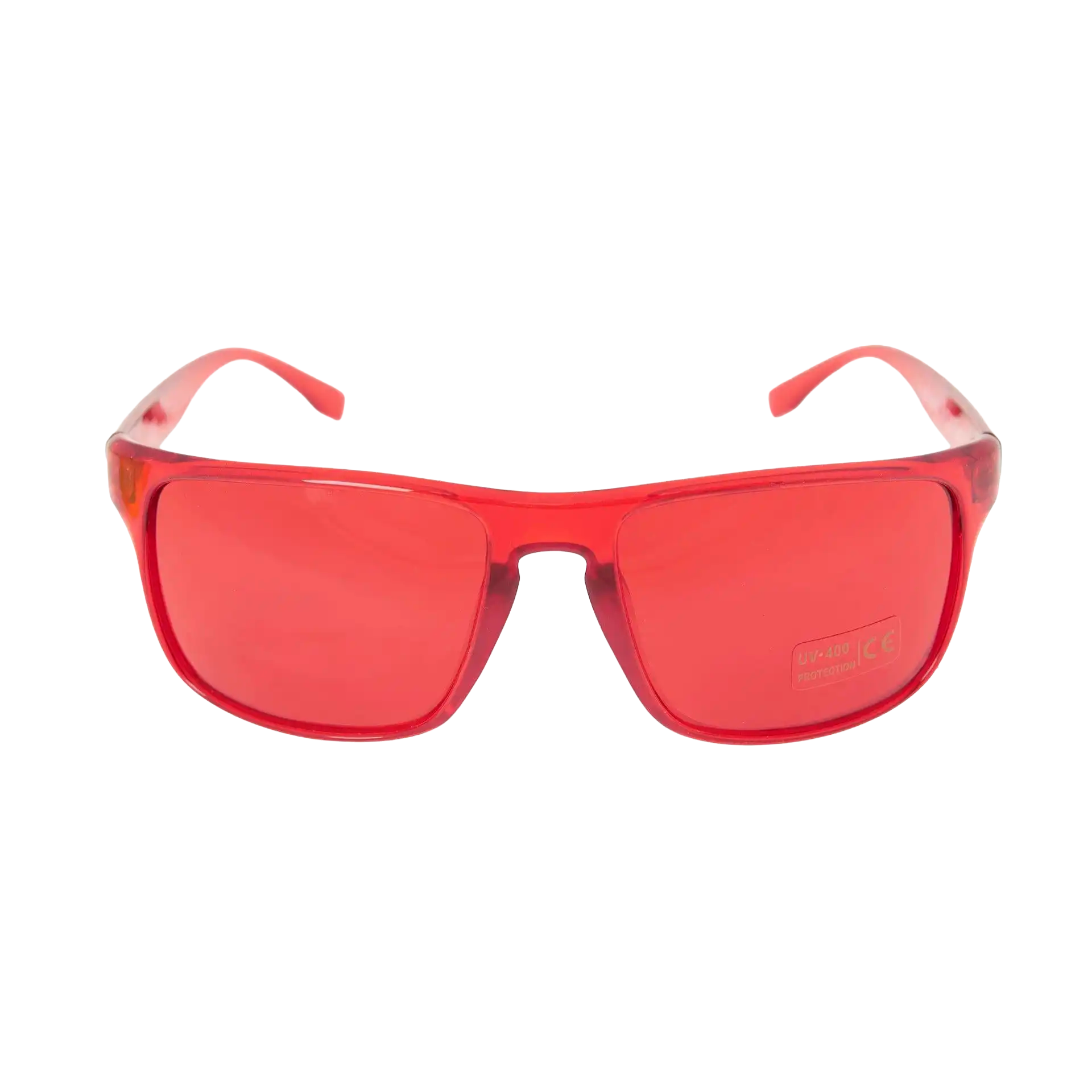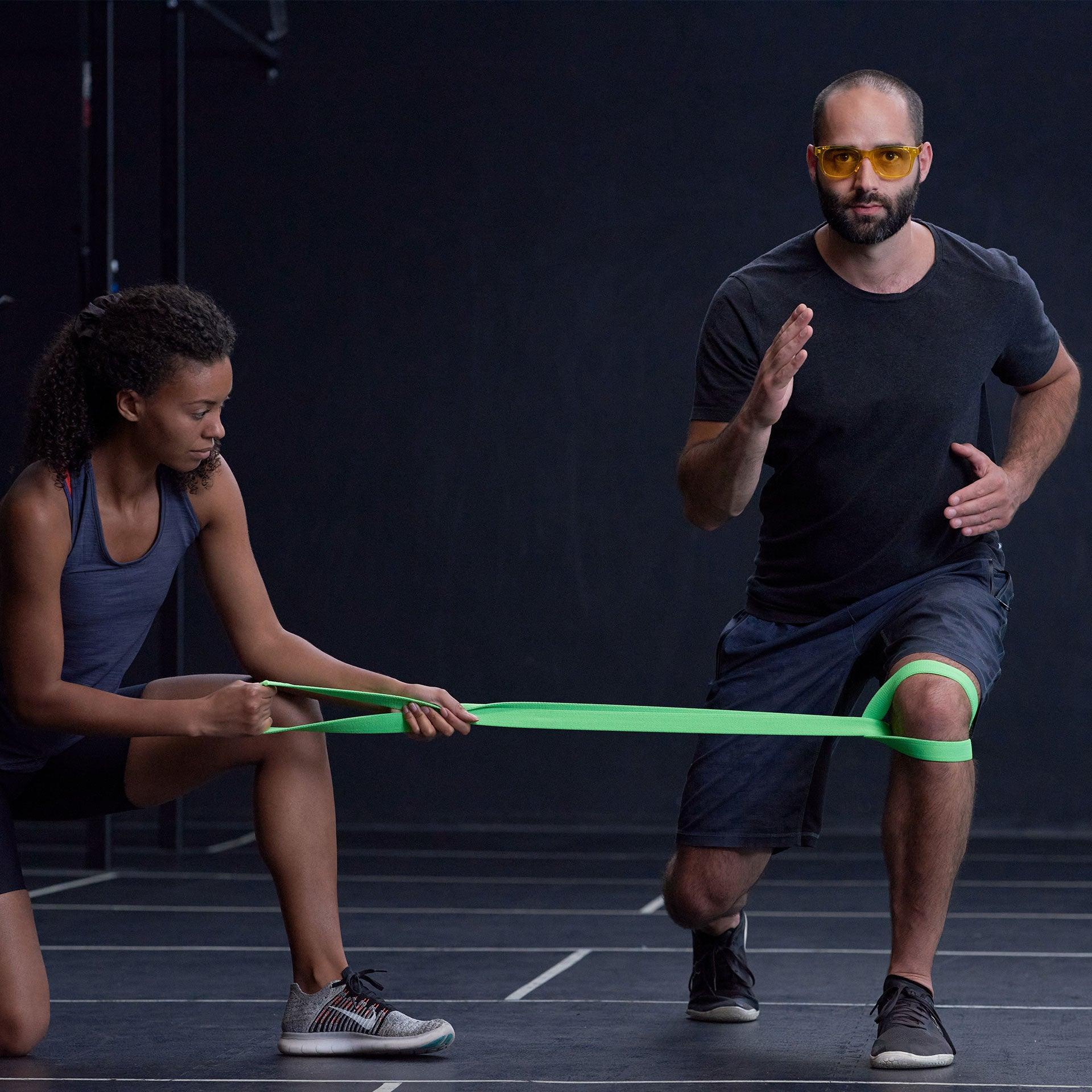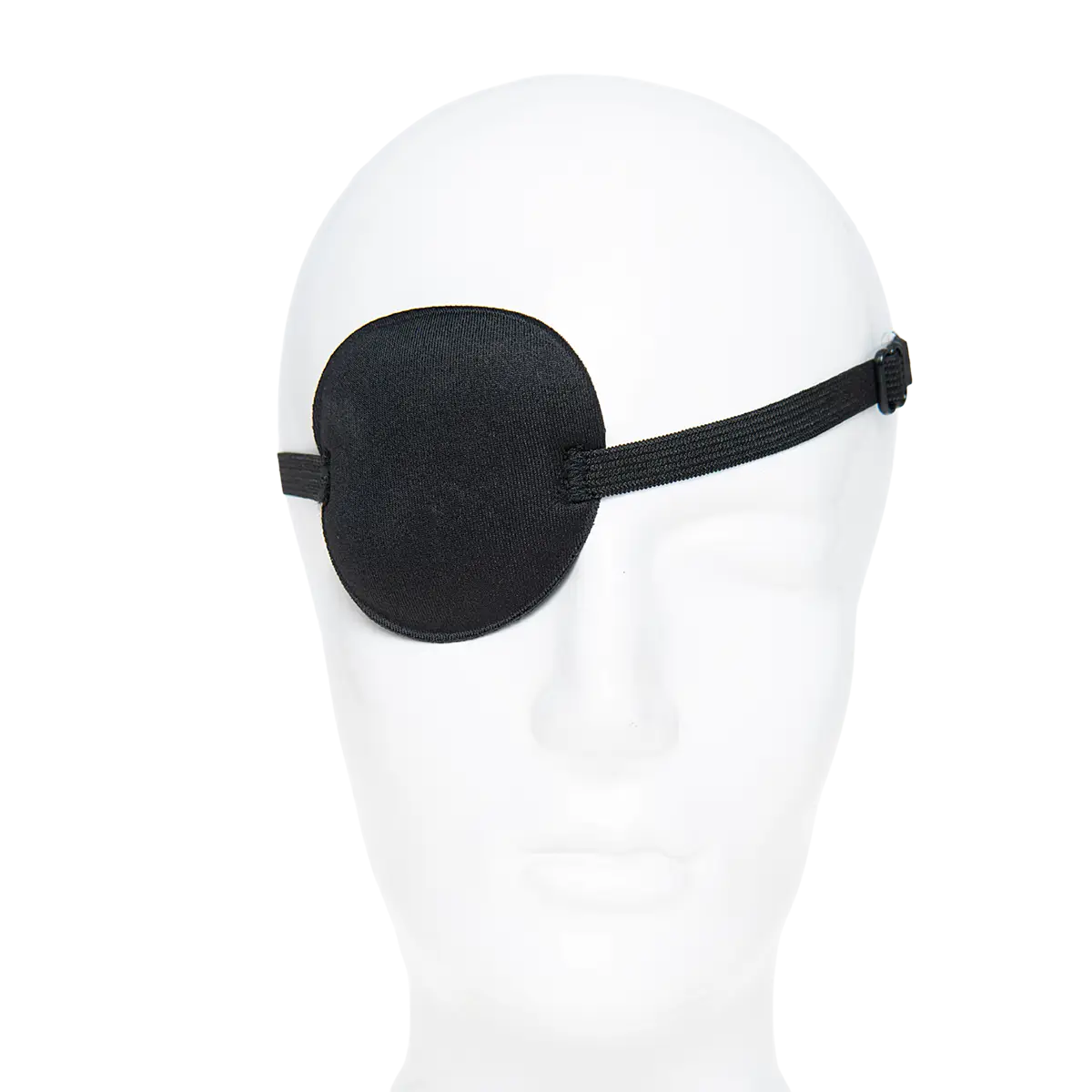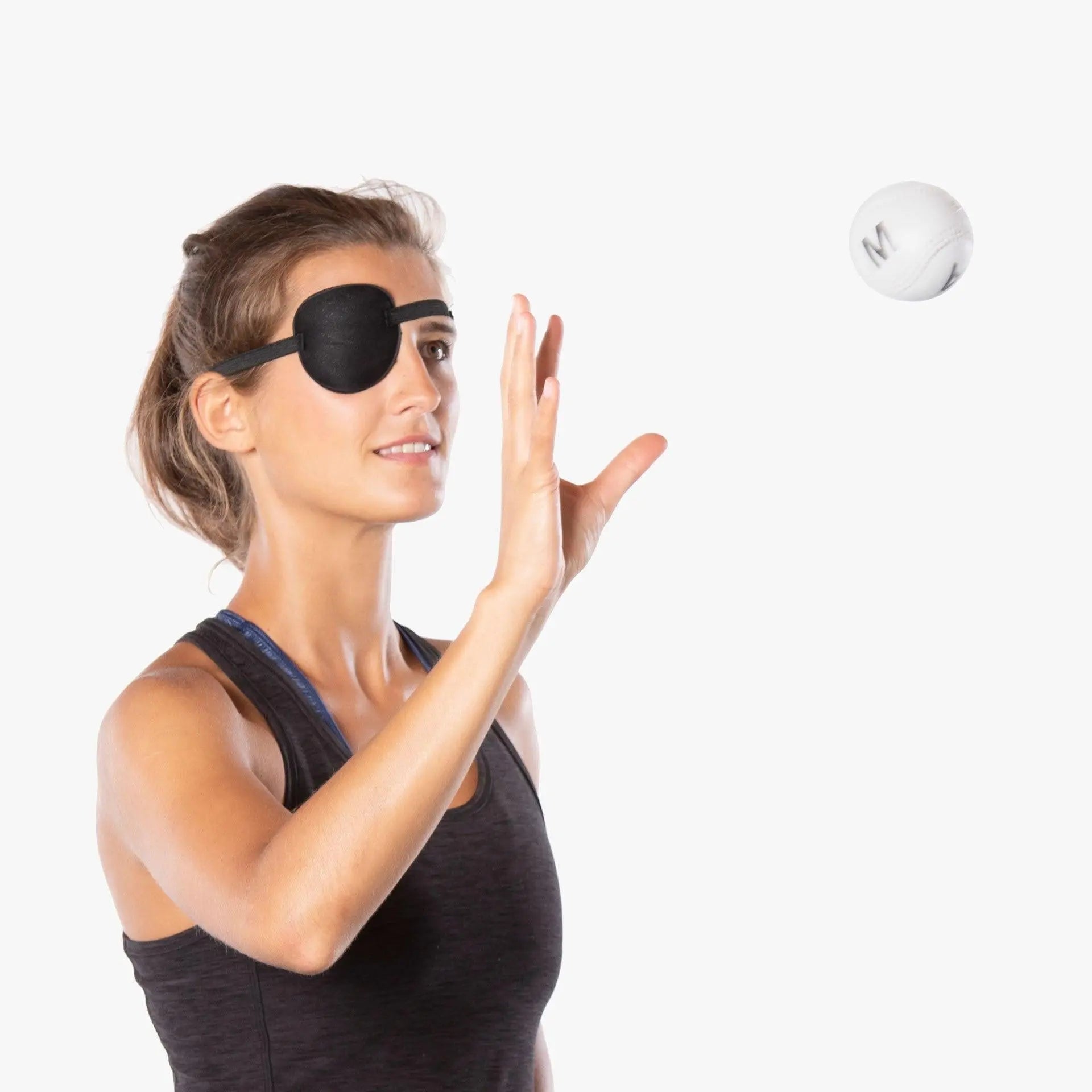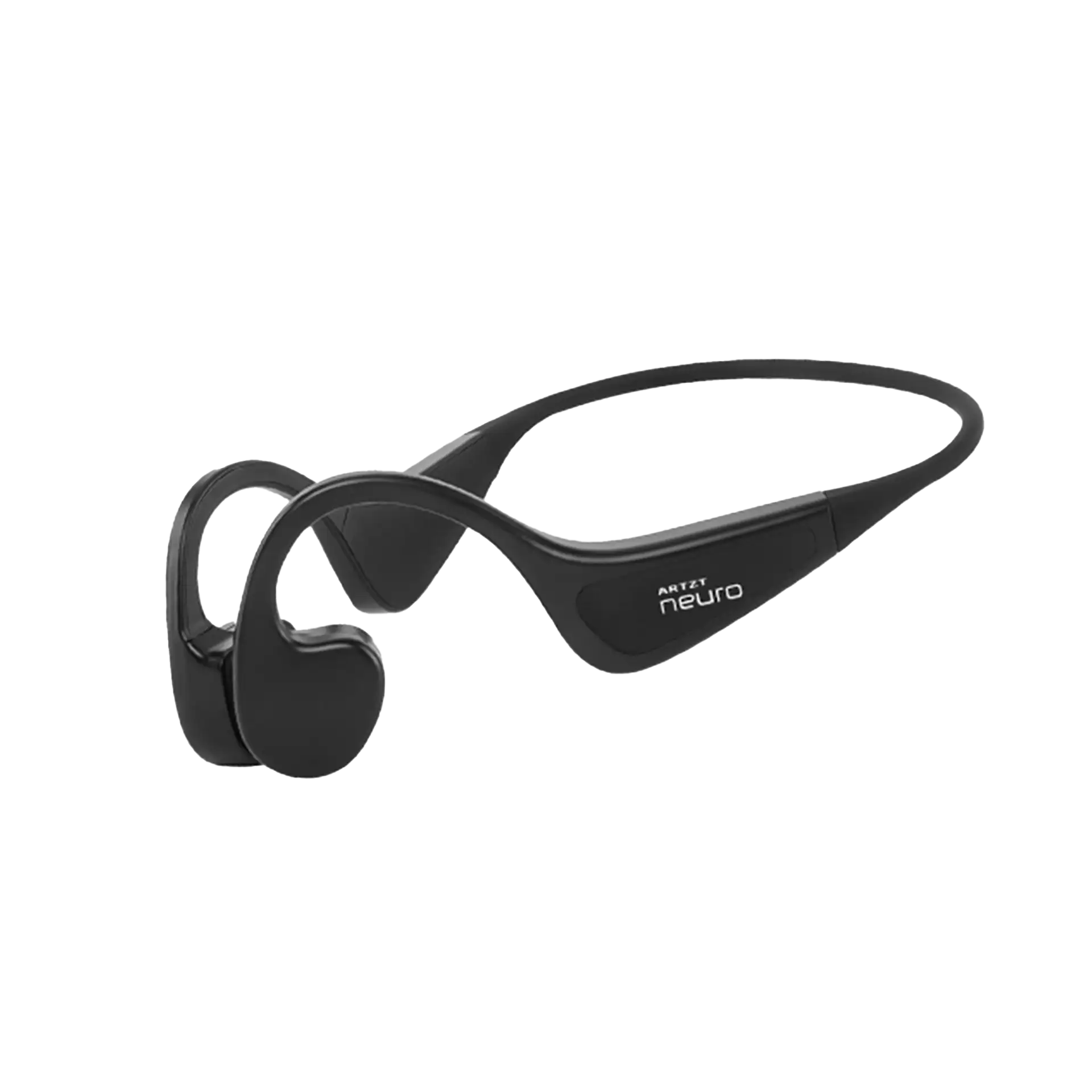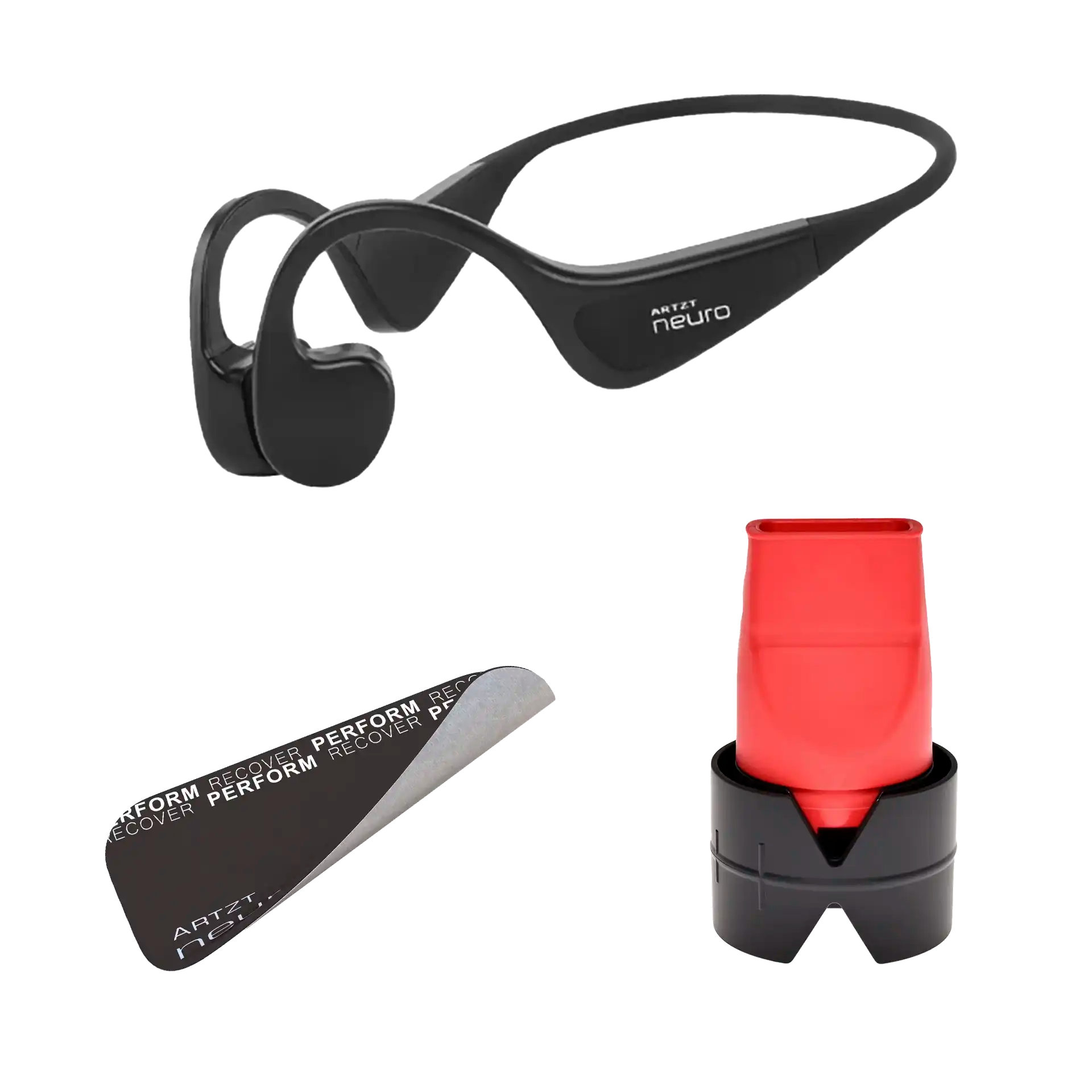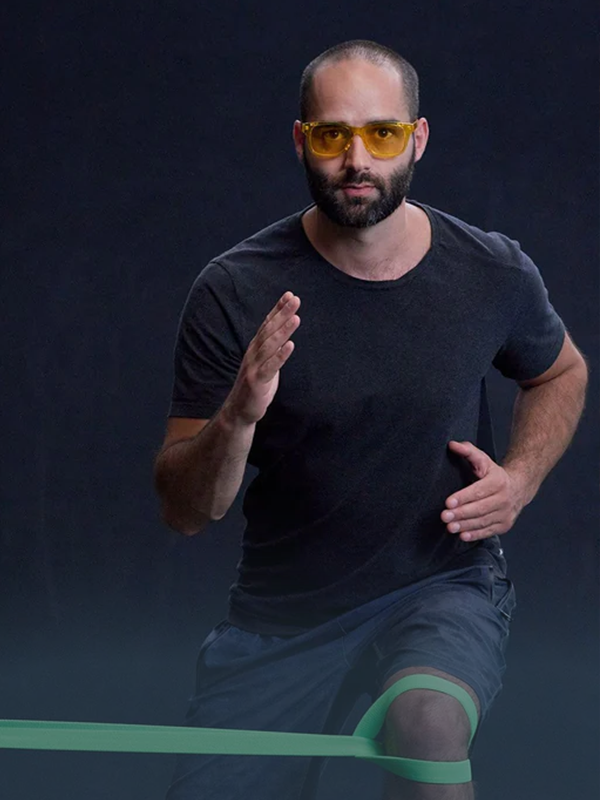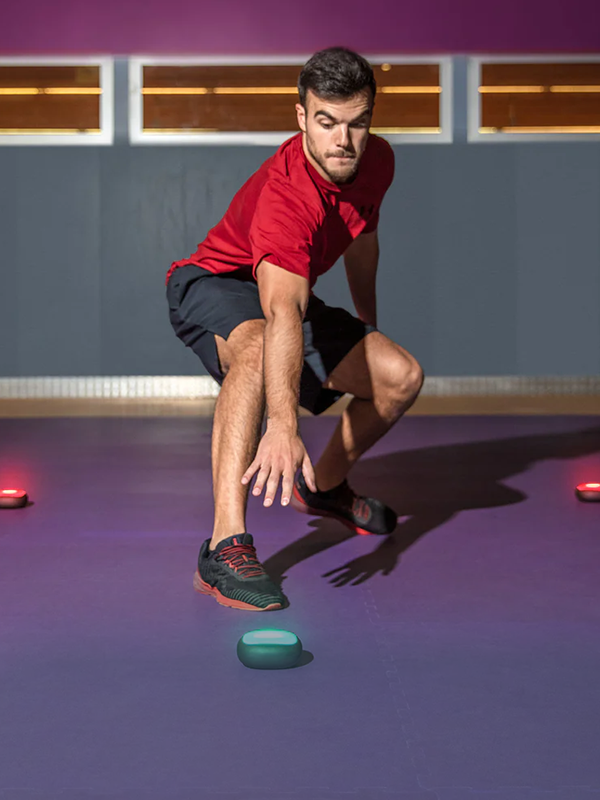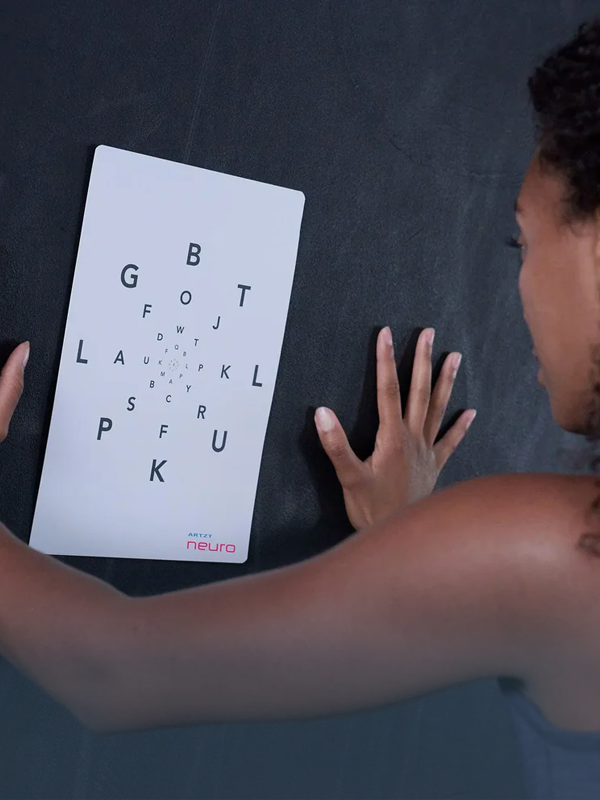Reading time: 3 minutes
Bone conduction headphones are a trendy alternative to conventional headphones . Athletes, technology fans and people with hearing problems are particularly enthusiastic about them. But what exactly makes these special earphones so special? Find out everything about the advantages and disadvantages of the technology and whether it is really healthier or even harmful .
Contents
What is bone conduction?
Bone conduction describes the transmission of sound waves through the skull and facial bones directly into the inner ear - without the classic route via the eardrum. The eardrum is therefore not needed to absorb and convert the sound.
Bone Conduction Headphones: How it Works!
You place the bone conduction headphones directly in front of your ears , on the bones of your cheeks, just below your temple. So they are not in your ears , but on your head.
When you listen to music or make a phone call on your cell phone via Bluetooth on headphones, the headphones convert the sound into small vibrations . These vibrations travel through the bone directly into your inner ear. There they set a fluid and tiny hairs in motion. This ensures that you can hear the sound - without using your eardrum .
Secure hold – even for glasses wearers
A thin neckband made of titanium ensures that the headphones are held securely. This headband is very light and sits comfortably on the head without exerting any pressure, even during intensive movement. Bone conduction headphones are therefore suitable for people who wear glasses . Wearing a hat is also not a problem.
Bone Conduction Headphones: Practical or Even Harmful?
Bone conduction headphones offer a number of practical advantages that make them particularly interesting for everyday use, sports, therapy and people with hearing impairments. However, as with any headphones, there are always potential risks.
The 4 biggest advantages
- Free ears: The open ear cup ensures that you can still fully perceive ambient noise, e.g. in traffic – a plus for safety and comfort.
- Protects the ear: Since bone conduction headphones bypass the ear canal and eardrum, they place less strain on the ear.
- Versatility: They are not only suitable for fitness enthusiasts, but also for the hearing impaired and for hearing therapy, as sounds are perceived differently via bone conduction and can stimulate cranial nerves. Bone conduction headphones can also be used while sleeping.
- Robust and weatherproof: Many models are IP65 certified, which makes them resistant to dust, sweat and even rain. So outdoor fans can easily listen to music, even in bad weather.
The 3 biggest risks
- Adjust the volume: Although bone conduction headphones are less stressful for the eardrum, it is important not to set the volume too high. Vibrations that are too loud can also affect your inner ear via bone conduction.
- Take breaks: As with any headphones, you should take regular breaks to avoid overloading your hearing.
- Not suitable for all hearing impairments : Whether they help with hearing loss depends largely on the type and cause of the impairment.
Conclusion : Bone conduction headphones do not pose a health risk if used responsibly and correctly.
Flexible for sports, work, relaxation, etc.
Bone conduction headphones are not only an exciting innovation, but also flexible in their use. They are ideal for sports, recreation, therapy and even special neuroathletic training programs.
For sports and leisure
Bone conduction headphones are perfect for athletes with their open ear design because they leave the ears free. This means you can listen to music and hear ambient noises such as traffic or announcements at the same time - an important safety aspect. They also offer:
- Robustness: Many models are water and sweat resistant (IP65 certification), which means they can be used without any problems even in the rain or during intensive workouts.
- Comfortable to wear: The lightweight titanium neckband ensures a secure hold, even during quick movements. Glasses or hats do not interfere.
- Good sound quality: Precise reproduction of bass and treble as well as clear tones make them attractive even for louder environments with a lot of noise.
- Powerful battery with 6 hours of battery life and easy, wireless Bluetooth connection to your smartphone, tablet or PC.
For therapy and medical applications
Bone conduction headphones are not only a lifestyle product, but also a valuable tool in therapy.
- Targeted stimulation: Sounds and frequencies can be perceived differently via bone conduction. This makes it useful for people with hearing problems, balance disorders or certain neurological challenges.
- Neuroathletic training: With special training apps , frequencies can be used to stimulate cranial nerves. These nerves help send position and sound information to the brain. Examples: improving balance, promoting auditory perception or helping with tinnitus complaints.
>> Reading tip: 3 neuroathletic exercises for tinnitus
For office and everyday life
Bone conduction headphones also offer a few advantages in everyday life or at work:
- Multitasking: Make phone calls via Bluetooth while listening to ambient noise.
- Hearing support: For people with sensitive ears or hearing problems, they are a pleasant alternative to conventional headphones.
Conclusion: Bone conduction headphones are practical and flexible to use
Thanks to their versatility, bone conduction headphones are a useful tool for sports, everyday life and the office. Your ears remain free. This means that outside noises, including horns or shouts, can be heard unhindered and at the same time as the sound from the headphones. This ensures greater safety .
What's more: Bone conduction headphones can stimulate different cranial nerves by vibrating the temporal bones. This can improve movement, stabilize the torso and spine, or reduce muscular tension . Bone conduction headphones can also help people who are hard of hearing.
When used correctly, bone conduction headphones can help improve athletic performance and minimize the risk of injury.
Conclusion: Definitely give it a try!


